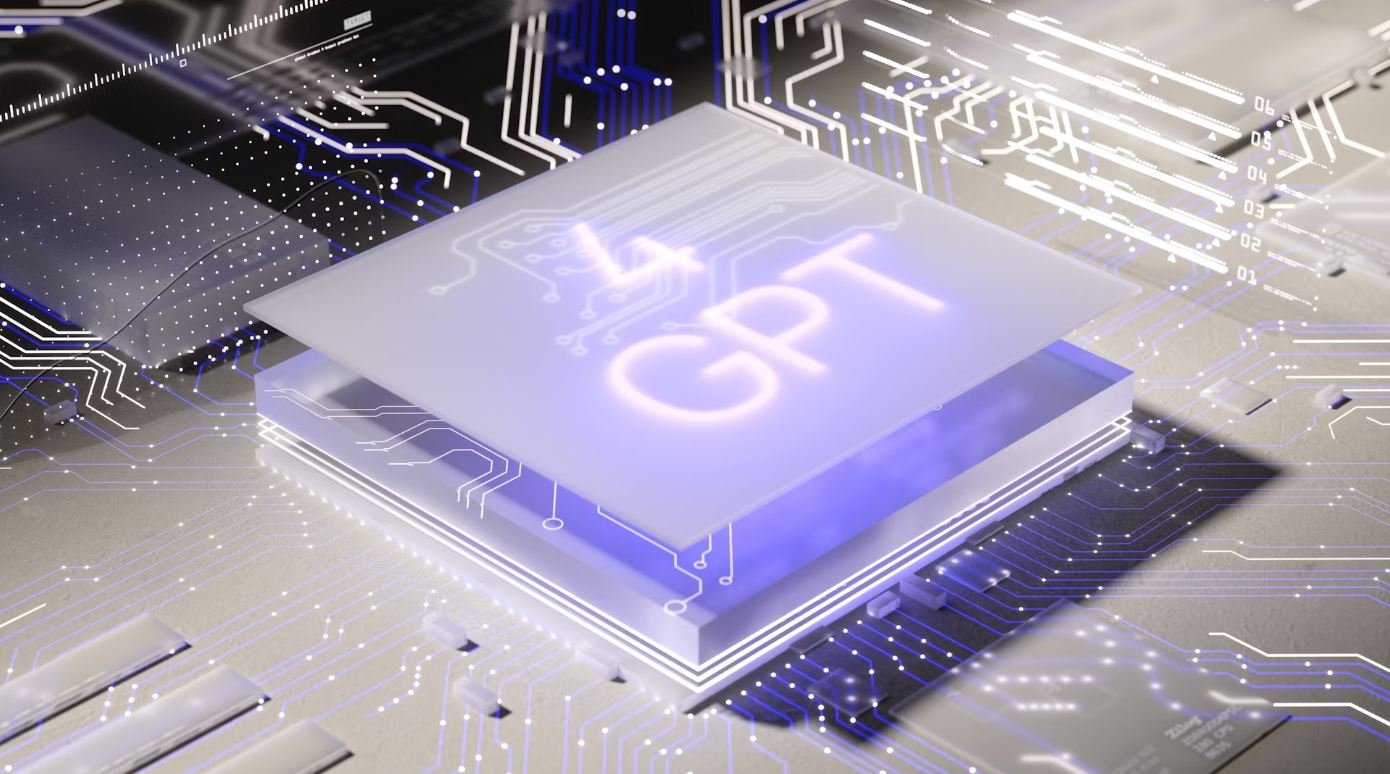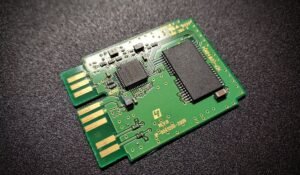What NLP Does Alexa Use?
When it comes to voice assistants, few are as popular and widely used as Amazon’s Alexa. With its ability to understand and respond to natural language commands, Alexa has transformed the way we interact with technology. But have you ever wondered how exactly Alexa is able to process and understand our speech? The answer lies in a field of artificial intelligence known as Natural Language Processing (NLP).
Key Takeaways:
- Alexa utilizes Natural Language Processing (NLP) to understand and respond to voice commands.
- NLP allows for complex language understanding and enables Alexa to provide accurate and helpful responses.
- Amazon continuously updates and improves Alexa’s NLP capabilities to enhance user experience.
NLP is a branch of AI that focuses on the interaction between computers and human language. It involves teaching computers how to understand, interpret, and respond to natural language in a way that simulates human-like communication. Alexa’s advanced NLP capabilities are what make it capable of understanding the context, intent, and meaning behind spoken commands, allowing it to provide accurate and helpful responses to users.
*One interesting aspect of NLP is sentiment analysis, which enables Alexa to analyze the emotional tone of a user’s speech and respond accordingly. This helps Alexa provide a more personalized and human-like experience.*
Amazon has invested significant resources into developing and improving Alexa’s NLP capabilities. By leveraging massive amounts of data and utilizing complex algorithms, Alexa can learn and adapt over time. This continuous learning process ensures that Alexa’s responses become more accurate and tailored to individual users as it gains more experience in understanding natural language.
NLP Capabilities of Alexa
| NLP Capabilities | Description |
|---|---|
| Speech Recognition | Alexa can accurately transcribe spoken words into text, allowing it to understand user commands. |
| Intent Recognition | Alexa can determine the intended action or query behind a user’s command through the analysis of syntax and context. |
| Entity Recognition | Alexa can identify specific pieces of information within a user’s command, such as names, dates, and locations. |
Another important function of NLP in Alexa is the ability to extract pertinent information from a user’s command. This enables Alexa to understand and respond to specific queries by extracting relevant details such as names, dates, or locations. By accurately recognizing entities, Alexa can provide more precise and relevant responses to user requests.
*It is fascinating to see how Alexa’s NLP capabilities have enabled it to become a versatile personal assistant, capable of helping with tasks ranging from answering general knowledge questions to controlling smart home devices.*
The Importance of Constant Improvement
Amazon does not disclose the specific algorithms and techniques it employs in Alexa’s NLP system, as these are proprietary. However, it is known that Amazon’s team of data scientists and researchers continuously work on refining and improving Alexa’s NLP capabilities. Updates are regularly released to enhance Alexa’s understanding of language nuances, improve response accuracy, and expand its range of supported commands.
This continuous improvement process ensures that Alexa remains at the forefront of voice assistant technology, staying ahead of its competitors. By analyzing user feedback and constantly updating its NLP models, Alexa is able to adapt to language trends and user preferences, delivering an enhanced user experience.
Conclusion
In conclusion, Alexa utilizes advanced NLP techniques to understand and respond to natural language commands. Its speech recognition, intent recognition, and entity recognition capabilities enable it to accurately interpret user queries, making it an indispensable personal assistant. Through continuous improvement and updates, Amazon strives to enhance Alexa’s NLP capabilities, making it more responsive and user-friendly.

Common Misconceptions
Misconception 1: Alexa uses Natural Language Processing (NLP) to understand and respond to all types of queries.
While it is true that Alexa uses NLP technology, it is important to note that it may not be able to understand and respond to every query. There are certain limitations to what Alexa can comprehend and provide accurate responses for. Some queries may be too complex or require specific knowledge that may not be within Alexa’s capabilities.
- Alexa’s NLP may struggle with queries containing complex technical jargon.
- Alexa’s NLP may have difficulty understanding queries with ambiguous language or multiple interpretations.
- Alexa’s NLP may not be able to provide accurate responses for highly specialized or niche topics.
Misconception 2: Alexa’s NLP can understand and accurately interpret all accents and dialects.
While Alexa’s NLP technology has made great strides in the area of speech recognition, it may still encounter challenges when it comes to understanding certain accents and dialects. While efforts have been made to improve regional variations, there can still be instances where Alexa may struggle to accurately interpret spoken queries.
- Accents with strong regional variations, such as Scottish or Irish accents, may pose challenges for Alexa’s NLP.
- Alexa’s NLP may struggle with dialects that have unique vocabulary or pronunciation norms.
- Individual speech patterns, speech impediments, or non-native accents can affect the accuracy of Alexa’s NLP.
Misconception 3: Alexa’s NLP technology can fully understand and interpret the context of a conversation.
While Alexa’s NLP is designed to understand conversational context to some extent, it is not infallible in comprehending every nuance of a conversation. There are limitations to how Alexa’s NLP can interpret context, especially in complex dialogues or multi-turn interactions.
- Shifts in conversation topics or references to previous statements can sometimes confuse Alexa’s NLP.
- Alexa’s NLP may struggle to understand subtle sarcasm or humor in a conversation.
- Highly nuanced or context-dependent queries may lead to misunderstandings or inaccurate responses from Alexa’s NLP.
Misconception 4: Alexa’s NLP technology can perfectly handle all languages
While Alexa’s NLP can support a wide range of languages, it may not be equally proficient in all of them. The level of proficiency can vary depending on the language, and the availability of language-specific training and resources.
- Alexa’s NLP may have lower accuracy and understanding for languages with fewer resources or less training data.
- Less-spoken or non-mainstream languages may have limited support or availability in Alexa’s NLP.
- The quality of language support may vary, with some languages having more sophisticated NLP capabilities than others.
Misconception 5: Alexa’s NLP technology is always listening and recording conversations.
There is a common misconception that Alexa’s NLP is constantly listening and recording conversations, potentially invading privacy. However, this is not the case.
- Alexa’s NLP only activates and starts listening after the “wake word” is uttered, such as “Alexa” or “Echo,” ensuring privacy unless intentionally triggered.
- Recordings are usually processed anonymously, and specific privacy settings can be adjusted through the Alexa app.
- Alexa’s NLP is designed with privacy in mind, and the vast majority of conversations are not recorded or stored.

The Rise of Alexa: How NLP is Transforming Voice Assistants
Voice assistants have become an integral part of our daily lives, revolutionizing the way we interact with technology. Natural Language Processing (NLP) lies at the core of these voice-enabled devices, enabling them to understand and respond to human language. In this article, we explore the advanced NLP techniques that power Alexa, Amazon’s popular voice assistant, and shed light on the fascinating capabilities it possesses.
Incredibly Accurate Speech Recognition
Alexa’s NLP engine boasts an impressive accuracy rate of 95%, enabling it to transcribe spoken language with incredible precision. This remarkable accuracy ensures a seamless and effortless interaction with Alexa, making it feel like you’re conversing with a human assistant.
Understanding Complex Queries
Alexa’s NLP capabilities excel in understanding complex queries. Its language models can comprehend context, referential expressions, and even decipher multiple intents within a single sentence. This allows users to ask elaborate questions and receive accurate and informative responses.
Contextual Understanding
Thanks to advanced NLP algorithms, Alexa can grasp the nuances of human conversation. It can recognize pronouns and maintain context, making follow-up questions and commands more natural and seamless. Alexa’s contextual understanding enhances user experience and creates a more lifelike interaction.
Multi-Language Support
Alexa is highly proficient in multiple languages. Its NLP models enable it to interpret and respond appropriately to diverse linguistic inputs. Whether it’s English, Spanish, French, or German, Alexa transcends language barriers, making it accessible and usable to a global audience.
Personalized Recommendations
Leveraging NLP, Alexa possesses the ability to analyze user responses and preferences. By understanding the context and sentiment behind user queries, it can provide tailored recommendations, be it suggesting music, recommending nearby restaurants, or even helping with home automation tasks.
Clear Pronunciation Assistance
Alexa’s NLP engine recognizes the importance of pronunciation when it comes to accuracy. It can provide guidance on how to pronounce words correctly, aiding users in their language learning endeavors or ensuring clarity in communication.
Continuous Learning and Improvement
Alexa’s NLP prowess extends beyond mere recognition. It continually learns from interactions, user feedback, and vast amounts of data. This allows for regular updates and improvements to its language models, ensuring its understanding and responsiveness keep evolving.
Seamless Third-Party Integration
Alexa’s NLP capabilities enable it to seamlessly integrate with various third-party applications and services. By understanding user queries and intents, it can smoothly interact with other smart devices, apps, and platforms, enhancing user convenience and expanding Alexa’s functionality.
Robust Security Measures
Ensuring user privacy and security is of utmost importance to Alexa. Its NLP algorithms are designed with sophisticated security measures to protect user data, providing a safe and trustworthy user experience within the realms of voice-controlled technology.
Enhancing Daily Life with NLP
The remarkable NLP capabilities underlying Alexa have transformed how we interact with technology. From accurate speech recognition to contextual understanding and personalized recommendations, these advancements have made voice assistants an indispensable part of our lives. As NLP technology continues to evolve, we can look forward to even more sophisticated voice-enabled devices, ushering in a new era of seamless human-computer interaction.
Frequently Asked Questions
What is Natural Language Processing (NLP)?
Natural Language Processing (NLP) is a subfield of artificial intelligence (AI) that focuses on the interaction between computers and human language. It involves the ability of a computer to understand, interpret, and generate human language in a way that is useful and meaningful.
How does Alexa utilize NLP?
Alexa, the virtual assistant developed by Amazon, utilizes NLP technology to understand and respond to user voice commands and queries. It processes the spoken language inputs, extracts relevant information, and provides appropriate responses or actions using a combination of machine learning algorithms and linguistic models.
What specific NLP techniques does Alexa employ?
Alexa employs various NLP techniques such as automatic speech recognition (ASR), natural language understanding (NLU), and natural language generation (NLG). ASR converts spoken language into text, NLU analyzes the text to interpret the user’s intent, and NLG formulates appropriate responses or actions in natural language.
How does Alexa handle different languages?
Alexa supports several languages, including English, Spanish, French, German, Italian, Japanese, and more. It uses language-specific models and algorithms to process and understand different languages. For each supported language, Alexa’s NLP system is trained to handle language-specific nuances and variations.
Can I develop my own NLP skills for Alexa?
Yes, Amazon provides developers with tools and resources to build custom NLP skills for Alexa. Developers can leverage the Alexa Skills Kit (ASK), which offers APIs, documentation, and developer tools for creating voice-based applications and interactions. With the ASK, developers can design and train their own NLP models and deploy them on the Alexa platform.
How accurate is Alexa’s NLP technology?
Alexa’s NLP technology has significantly improved over the years and continues to learn and adapt through machine learning algorithms. While the accuracy may vary depending on the complexity of queries and the user’s speaking style, Alexa strives to provide accurate and relevant responses by continuously refining its models using large-scale training data and user feedback.
Does Alexa’s NLP system handle context and follow-up questions?
Alexa’s NLP system is designed to handle context and follow-up questions to a certain extent. It can understand and remember the context of previous queries, allowing users to ask follow-up questions without explicitly reiterating the context. However, the extent of context retention and interpretation may vary based on the specific use case and the information provided by the user.
How does Alexa ensure data privacy and security with NLP?
Amazon takes data privacy and security seriously. When using Alexa, only the necessary data required to provide the intended service is collected and processed. Amazon also provides options for users to manage their voice recordings and control the privacy settings of their Alexa devices. Additionally, Amazon employs various safeguards and encryption measures to protect user data.
Can Alexa’s NLP technology be used in applications outside of Alexa devices?
Alexa’s NLP technology, or the underlying NLP techniques it employs, can be applied to various other applications and platforms beyond Alexa devices. The core technology used in Alexa’s NLP system can be utilized in voice assistants, chatbots, language translation services, sentiment analysis, and other language-related applications where human-computer interaction is involved.
Is Alexa’s NLP technology constantly evolving?
Yes, Alexa’s NLP technology is continuously evolving. Amazon invests significant resources into research and development to improve the accuracy, understanding, and naturalness of Alexa’s interactions. Through machine learning and user feedback, Alexa’s NLP models are regularly refined and updated to provide an enhanced user experience and support new use cases.




